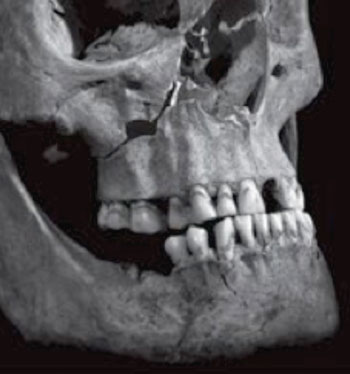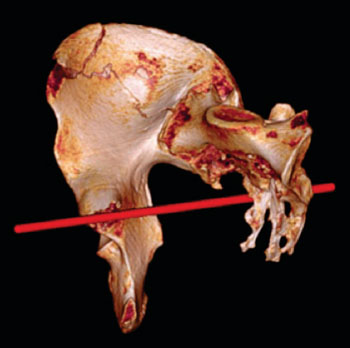Whole Body, Micro-CT Scan Techniques Identify Probable Cause of English King’s Death
By MedImaging International staff writers
Posted on 06 Oct 2014
A team of forensic imaging investigators used whole body computed tomography (CT) scans and micro-CT imaging of injured bones to analyze trauma to the English King Richard III’s 500-year-old skeleton carefully, and to determine which of the king’s wounds might have been fatal. Richard was the last English monarch to perish in battle.Posted on 06 Oct 2014
The remains of the king were found under a car park in Leicester, UK by archaeologists. The forensic imaging researchers, working with the forensic pathology unit and the department of Engineering at the University of Leicester (UK), used whole-body CT scans and micro-CT imaging of injured bones to analyze trauma to the 500-year-old skeleton carefully, and to determine which of the King’s wounds might have proved lethal. They also studied tool marks on bone to identify the medieval weapons potentially responsible for his injuries.
The findings, published September 17, 2014, in the Lancet, revealed that Richard’s skeleton bore 11 wounds at or close to the time of his death—nine of them to the skull, distinctly sustained in battle and suggesting he had removed or lost his helmet, and two to the postcranial skeleton.
Sarah Hainsworth, study author and professor of materials engineering at the University of Leicester, explained, “Richard’s injuries represent a sustained attack or an attack by several assailants with weapons from the later medieval period. The wounds to the skull suggest that he was not wearing a helmet, and the absence of defensive wounds on his arms and hands indicate that he was otherwise still armored at the time of his death.”
The investigators, led by Dr. Jo Appleby, from the University of Leicester School of Archaeology and Ancient History, deduced that the postcranial injuries, including the possibly fatal one to the pelvis, might have been inflicted after Richard’s death, on the basis that had he been alive he would have been wearing a specific type of armor worn in the late 15th century that would have prevented such wounds.
According to Prof. Guy Rutty, study coauthor, from the East Midlands pathology unit at the University of Leicester, “The most likely injuries to have caused the King's death are the two to the inferior aspect of the skull—a large sharp force trauma possibly from a sword or staff weapon, such as a halberd or bill, and a penetrating injury from the tip of an edged weapon. The Richard’s head injuries are consistent with some near-contemporary accounts of the battle, which suggest that Richard abandoned his horse after it became stuck in a mire and was killed while fighting his enemies.”
Commenting on the research, Dr. Heather Bonney from the Natural History Museum (London, UK), said, “Appleby and colleagues provide a compelling account, giving tantalizing glimpses into the validity of the historic accounts of his death, which were heavily edited by the Tudors in the following 200 years. Wherever his remains are again laid to rest, I am sure that Richard III will continue to divide opinion fiercely for centuries to come.”
Related Links:
University of Leicester

















